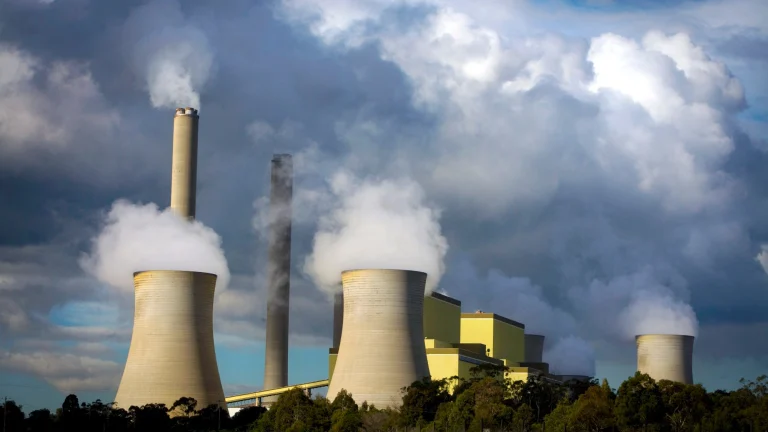A new report has shown that Greenhouse gas emissions from Australia’s ageing coal-fired power plants rose slightly in the first half of the year, reversing years of declining pollution from the power section and raising questions about the country’s ability to meet its climate targets.
According to the report, an increase in electricity consumption across the country and lower than usual wind and hydro output led to an increase in coal generation. It pushed up emissions from the electricity grid between January and June.
Climate pollution from the east coast power grid had previously been falling steadily as renewable energy pushed out coal and gas, lifting the share of solar, wind and hydro to about 40%.
Though at this stage only a short-term trend, the rise in electricity emissions is at odds with official government projections, which had forecast that coal-fired generation would continue to fall by about 10 terra-watt hours a year. In reality, coal plant output is up about 3.5% this year.
It meant that while Australia’s total national emissions were down a fraction over the year to March – by 0.6% – they increased in the March quarter and, based on preliminary data, the June quarter.
According to the latest quarterly greenhouse gas update, Australia’s emissions are 440.2m tonnes, which is 28.2% less than they were in 2005 – the baseline year against which it has made domestic and international commitments. The Albanese government has legislated a reduction targets of 43% by 2030 and net zero by 2050.
Read also: Australia records hottest August on record
Scientists say Australia should be making cuts even more rapidly to play its part in the goal of aiming to limit average global heating by 1.5C.
Electricity remains the biggest source of emissions by sector in the national economy despite having fallen by about 23% since 2005 as renewables have replaced coal. Other parts of the fossil fuel economy have either flatlined in pollution output or, in the case of transport, increased CO2 emissions.
The climate change minister, Chris Bowen, said emissions in the March quarter were affected by warmer than average temperatures pushing up electricity demand.
He emphasised the longer-term trend, and said the latest inventory showed the government’s plan to bolster renewables, including a 32 gigawatt underwriting program, “is working” after a “decade of denial and delay” under the Coalition.
“We must continue to drive action across all sectors of the economy,” he said, pointing to changes to the “safeguard mechanism” that is meant to limit emissions from major industrial sites and national vehicle emissions standards that will take effect in January.
The Coalition’s climate spokesman, Ted O’Brien, said the report showed national emissions had increased 1% since Labor came to office. This period, since May 2022, included a period in which emissions rebounded to previous levels after Covid-19 lockdowns in some states cut pollution from transport and some industry. But O’Brien said it showed Labor’s energy plan had “failed”.
Story was adapted from the Guardian.
